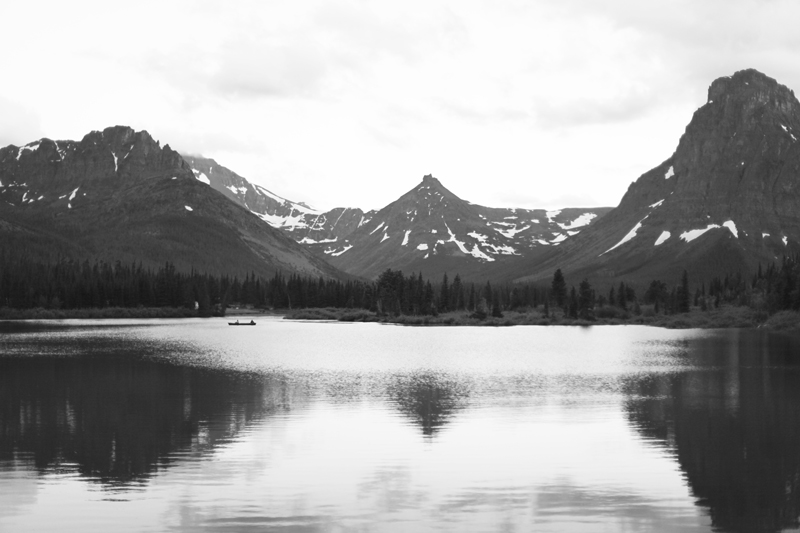From his ranger post in southern Utah’s Arches National Park, Ed Abbey once declared that America’s wilderness is “not a luxury but a necessity of the human spirit.” His words ring true from the red rock canyonlands of the desert southwest, from one beautiful corner of this country to another.
But this month, even as our national parks and wilderness areas reopen after a period of restricted access, Abbey has certainly been rolling in his grave (beneath a federally-owned portion of the Sonora Desert).
The National Park Service (NPS) was one of the federal agencies hit hardest during the government shutdown. Notices posted at iron gates turned away visitors from trailheads and fenced off parks and monuments. NPS employees were furloughed; small businesses that depend on traffic in and out of these areas struggled. If this shutdown had happened a few months earlier, my own summer job would have been jeopardized, if not terminated completely.
But it is not the threatened economy surrounding these parks that would have caused another Abbey outrage (after all, he opposed wilderness tourist development in the first place). Nor would a shutdown keep him from entering the land he loved. When a barbed wire fence crossed his path, a wire-cutter offered a simple solution.
A deeper dilemma extends beyond the events of this month and lies behind the absurdity that national park boundaries can even be closed in the first place. Evidently, the conceptual reality of wilderness in this country is altogether endangered.
The concept of wilderness falls into the category of ambiguities that evade clear defining. The Wilderness Act gave it a shot in 1964, recognizing wilderness as an area “in contrast with those areas where man and his own works dominate the landscape,” where “man himself is a visitor who does not remain.” A distinction between man and nature is drawn, succinctly illustrated by a federal fence.
America then becomes a series of plots, divided between private ownership and the government. We can call some of these zones “wilderness,” but there is nothing wild about an arbitrarily green-shaded portion on a U.S. map, especially if access is restricted.
Wilderness should be wild. Obviously. Yet the wildness of wilderness is too often forgotten. Even the governmental processes of ‘conservation’ and ‘preservation’ concede to a human designation of land that betrays the very idea of wildness. America’s wilderness areas can be considered wild only until a government Air Force test or wildlife research project or shutdown proves otherwise.
I doubt this was the intention of George Catlin when he first recommended the establishment of national parks. In the 1830s, the young painter stood at the confluence of the Yellowstone and Missouri Rivers and expressed his desire for “some great protecting policy of government” to create “a nation’s park, containing man and beast, in all the wild and freshness of their nature’s beauty!” This vision soon gave birth to Yellowstone National Park, our nation’s first protected wilderness.
It is no coincidence that Catlin’s national park idea coincided in space and time with his famous artistic depictions of Native American life in the Great Plains. The image of hunters on horseback in pursuit of a herd of bison over the northern hills represented to Catlin the wildness of nature more so than an empty landscape devoid of people. Yellowstone was conceived along with the recognition that nature contained both man and beast.
Yet, somewhere between Catlin’s life and ours, our nation’s public land has been further partitioned between wilderness areas and Native American reservations – for the sake of conservation. Along with the attempt at encasing national parklands in closable borders, this is another example that ousts the fallacy of our federal government’s definition of wilderness.
So the question remains: if every mountain, forest, lake or river can be closed to the public by a federal notice or a “no trespassing” sign, where does wilderness still exist? Where do we recognize the land that does not fall under private or government jurisdiction – that exists for the sake of itself and nothing else?
In an attempt to answer these questions and rediscover our country’s wildness, we can view this month’s closing of national parks as another fallacy to ignore.
Besides, government or not, wildness remains.
This month in the American West, a desert sun continues to cast its warm glow over the red rock mesas of northern Arizona. An autumnal vibrancy increasingly differentiates the timbered choirs of aspens from their evergreen neighbors. The slopes of the upper Rockies grow whiter everyday with the approaching winter.
Even in Atlanta’s backyard, the Chattahoochee perpetually flows its 400-mile series of rocky shoals, and wild Appalachia finds its humble beginning in the smoky north Georgian foothills.
This wilderness is a necessity of the human spirit, and vice versa. If the only thing keeping you from experiencing it is the closed border of a perpetuated fallacy, then it’s time to hop the fence.
Austin Price is a College senior from Houston, Texas.
Photo by Austin Price
The Emory Wheel was founded in 1919 and is currently the only independent, student-run newspaper of Emory University. The Wheel publishes weekly on Wednesdays during the academic year, except during University holidays and scheduled publication intermissions.
The Wheel is financially and editorially independent from the University. All of its content is generated by the Wheel’s more than 100 student staff members and contributing writers, and its printing costs are covered by profits from self-generated advertising sales.







Webmaster Referral – Anytime you refer a webmaster, you can make 10% of their sales on
a recurring basis. Honorable Mention: Senior Social Networking Sites The Cool Grandma Slogan: Empower Senior online community and have fun doing it Website: Applications: Articles,
chat, discussion forums, tutorials, links to games, and
more Registration: Free registration, for posting in forum.
Video chat likewise has whenever messaging feature and that is
ideal when mic will not be available. There are various appealing males
to entice the female customers of grownup webcam web-sites.
I’m a keen letter writer, and would enjoy to know if there is anyhow of creating a letter writing community as a result of this. Creative letter writers writing to creative letter writers the entire world over. I’ll reply to all those who wish to write and not just receive. 51 Lavender Sweep, London SW11 1DY. England